
Drawing House Forms
A, B, and C show three types of triangular prisms: right, isosceles, and equilateral. When put together…

Manicure Scissors
At first scissors seem to have been small, awkward things, with straight blades and handles. Now they…
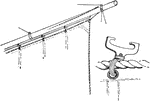
Railway
"Railway, with single traveler in detail. Nautical, iron jackstays bolted on the under side of standing…
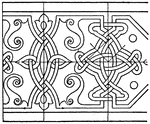
Persian Interlacement Band
The Persian interlacement band was found on a metal vessel. It's an oriental style that exhibits greater…

Russian Interlacement Band
The Russian interlacement band is an oriental pattern that exhibits variety of shapes with round forms.

Ornament of a Vaulted Roof
Roman arches were, as a rule, ornamented with sunken panels of various shapes, in which were introduced…

Ornament of a Vaulted Roof
Roman arches were, as a rule, ornamented with sunken panels of various shapes, in which were introduced…

Entrance Façade of Diocletian's Palace
"Fragment of the Entrance-Façade of the Palace of Diocletian at Spalatro. The tendency of the…
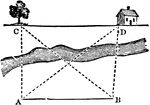
Square
An illustration of a square and triangles within the square. This is an example of a problem that can…
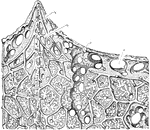
Upper Section of Sponge
An illustration of the upper portion of a sponge: p, Pore; s, Subdermal cavity; c1, chief fiver of the…
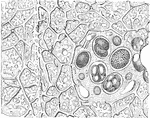
Lower Section of Sponge
An illustration of the lower portion of a sponge. O, OS, and M are illustrations of sponge eggs magnified…
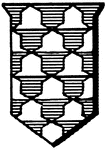
Vair Shield Fur
A shield or escutcheon emblazoned with the fur, vair, represented by alternating azure (blue) and argent…
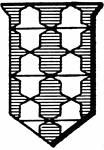
Counter-Vair Shield Fur
A shield or escutcheon emblazoned with the fur, vair, represented by alternating azure (blue) and argent…
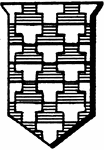
Potent Shield Fur
A shield or escutcheon emblazoned with the fur, potent, represented by alternating azure (blue) and…
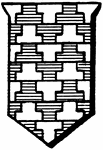
Potent-Counter-Potent Shield Fur
A shield or escutcheon emblazoned with the fur, potent-counter-potent, represented by alternating azure…
Double Arch
Tangrams, invented by the Chinese, are used to develop geometric thinking and spatial sense. Seven figures…
Arch
Tangrams, invented by the Chinese, are used to develop geometric thinking and spatial sense. Seven figures…

Triangular Double Arch
Tangrams, invented by the Chinese, are used to develop geometric thinking and spatial sense. Seven figures…

Bear
Tangrams, invented by the Chinese, are used to develop geometric thinking and spatial sense. Seven figures…
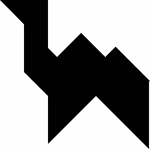
Camel
Tangrams, invented by the Chinese, are used to develop geometric thinking and spatial sense. Seven figures…

Lit Candle
Tangrams, invented by the Chinese, are used to develop geometric thinking and spatial sense. Seven figures…
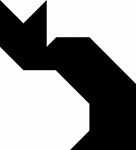
Sitting Cat
Tangrams, invented by the Chinese, are used to develop geometric thinking and spatial sense. Seven figures…

Cat
Tangrams, invented by the Chinese, are used to develop geometric thinking and spatial sense. Seven figures…
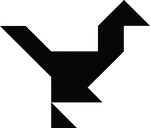
Cormorant
Tangrams, invented by the Chinese, are used to develop geometric thinking and spatial sense. Seven figures…

Cup
Tangrams, invented by the Chinese, are used to develop geometric thinking and spatial sense. Seven figures…
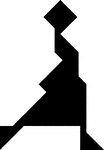
Dancer
Tangrams, invented by the Chinese, are used to develop geometric thinking and spatial sense. Seven figures…

Double Arrow
Tangrams, invented by the Chinese, are used to develop geometric thinking and spatial sense. Seven figures…

Diver
Tangrams, invented by the Chinese, are used to develop geometric thinking and spatial sense. Seven figures…

Dog
Tangrams, invented by the Chinese, are used to develop geometric thinking and spatial sense. Seven figures…

Dolphin
Tangrams, invented by the Chinese, are used to develop geometric thinking and spatial sense. Seven figures…

Duck
Tangrams, invented by the Chinese, are used to develop geometric thinking and spatial sense. Seven figures…

Egret Facing Forward
Tangrams, invented by the Chinese, are used to develop geometric thinking and spatial sense. Seven figures…
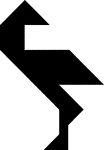
Egret Facing Backward
Tangrams, invented by the Chinese, are used to develop geometric thinking and spatial sense. Seven figures…

Shark
Tangrams, invented by the Chinese, are used to develop geometric thinking and spatial sense. Seven figures…
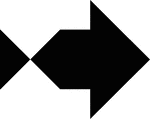
Parrot Fish
Tangrams, invented by the Chinese, are used to develop geometric thinking and spatial sense. Seven figures…
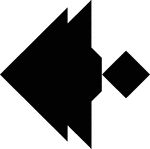
Angelfish
Tangrams, invented by the Chinese, are used to develop geometric thinking and spatial sense. Seven figures…

Beta Fish
Tangrams, invented by the Chinese, are used to develop geometric thinking and spatial sense. Seven figures…
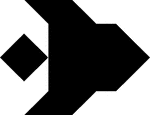
Hogfish
Tangrams, invented by the Chinese, are used to develop geometric thinking and spatial sense. Seven figures…
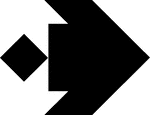
Flounder
Tangrams, invented by the Chinese, are used to develop geometric thinking and spatial sense. Seven figures…

Fisherman
Tangrams, invented by the Chinese, are used to develop geometric thinking and spatial sense. Seven figures…
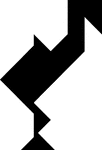
Flamingo
Tangrams, invented by the Chinese, are used to develop geometric thinking and spatial sense. Seven figures…
Flower
Tangrams, invented by the Chinese, are used to develop geometric thinking and spatial sense. Seven figures…
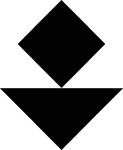
Flower
Tangrams, invented by the Chinese, are used to develop geometric thinking and spatial sense. Seven figures…
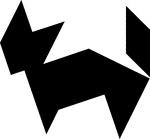
Standing Fox
Tangrams, invented by the Chinese, are used to develop geometric thinking and spatial sense. Seven figures…

Lying Fox
Tangrams, invented by the Chinese, are used to develop geometric thinking and spatial sense. Seven figures…

Fort Matanzas
Tangrams, invented by the Chinese, are used to develop geometric thinking and spatial sense. Seven figures…

Giraffe
Tangrams, invented by the Chinese, are used to develop geometric thinking and spatial sense. Seven figures…

Stingray
Tangrams, invented by the Chinese, are used to develop geometric thinking and spatial sense. Seven figures…

Hammer
Tangrams, invented by the Chinese, are used to develop geometric thinking and spatial sense. Seven figures…

Hexagon
Tangrams, invented by the Chinese, are used to develop geometric thinking and spatial sense. Seven figures…
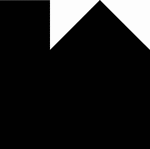
Small House
Tangrams, invented by the Chinese, are used to develop geometric thinking and spatial sense. Seven figures…

Medium House
Tangrams, invented by the Chinese, are used to develop geometric thinking and spatial sense. Seven figures…

Large House
Tangrams, invented by the Chinese, are used to develop geometric thinking and spatial sense. Seven figures…

Indian
Tangrams, invented by the Chinese, are used to develop geometric thinking and spatial sense. Seven figures…

Iron
Tangrams, invented by the Chinese, are used to develop geometric thinking and spatial sense. Seven figures…
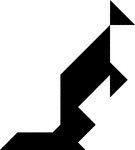
Kangaroo
Tangrams, invented by the Chinese, are used to develop geometric thinking and spatial sense. Seven figures…

Kettle
Tangrams, invented by the Chinese, are used to develop geometric thinking and spatial sense. Seven figures…

Lighthouse
Tangrams, invented by the Chinese, are used to develop geometric thinking and spatial sense. Seven figures…
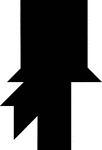
Bearded Man in a Tophat
Tangrams, invented by the Chinese, are used to develop geometric thinking and spatial sense. Seven figures…

Man
Tangrams, invented by the Chinese, are used to develop geometric thinking and spatial sense. Seven figures…